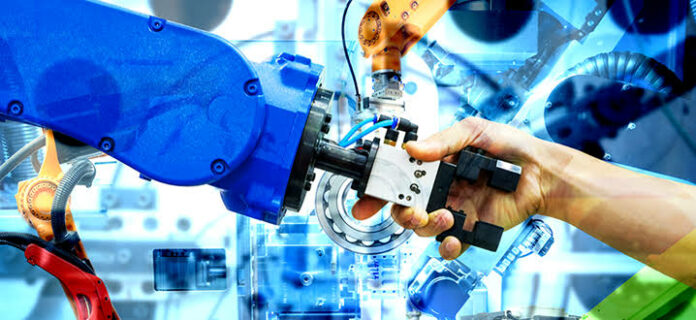COBOTS, or collaborative robots, are robots built for direct human-robot contact in common space, or when humans and robots are in close vicinity. COBOT applications differentiate with conventional industrial robot applications where robots are detached from human contact. COBOT may have several applications, including knowledge robots in public environments, logistics robots that carry goods inside buildings, to industrial robotics that help simplify ergonomic activities such as helping humans carry heavy objects, or feeding machinery or assembly operations. In other words, it helps human beings and assists them to do their work especially those works which involve a lot of human labour and intervention. This also proves to be cost-effective in the long run for the companies.
The Covid-19 pandemic has brought about a radical shift in how businesses are working now, keeping in mind the regulations and restrictions on social distancing. They are keen on maintaining market stability throughout the coronavirus period. This paved the way for the development of a new type of co-worker, characterized by robotic technology and powered by Artificial Intelligence. This can radically minimize the need for human labour in the organization and maintain the same standard of work with the help of COBOTS.
To mitigate global supply chain risks, trade experts expect manufacturers to acquire and implement automation to keep the supply cycle continuous. Intelligent automation and cobot technologies have also been causing quite a buzz in industries, as the factories around the globe are trying to work out on how the market can move ahead smoothly.
Many C-suite leaders around the world have to raise the need for intelligent and scalable automation to help them tackle the pandemic situation. With the emerging Coronavirus count rising high rapidly, companies are constantly focusing on the need for collaborative robots to meet the social distancing requirements and the need for rapid change in production lines. Cobots are robots, who work along with humans to do routine tasks in the manufacturing business and commercial warehouses. While this transition is being monitored with care, cobots also face a challenge of understanding and require time to be trained to fulfil the unique needs of the client.
Case studies:
DCL Logistics:
DCL Logistics, a third-party logistics firm based in Fremont, California, reported a 30 per cent rise in sales over 60 days as the online business flourished. Their usual approach to meeting the increase in demand would have been to employ more temporary workers. In this scenario, the chance of coronavirus infection should not have been raised as it should have been. DCL immediately introduced an additional UR10e-based fulfilment cell, culminating in a remarkable 500 per cent improvement in ROI efficiency for each device spanning three months.
BMW:
It is no wonder that automotive makers were the first businesses to embrace integrated industrial robots, despite the manual, routine activities they need. The BMW Mini factory in the United Kingdom has been using a cobot to change the riveting operation. Previously, the work was carried out solely by the staff. They ‘d first prep the rivets and then finally perform the riveting. Since the introduction of autonomous robotics, the activities are performed side by side. The human employee mounts one hand of the jig while the cobot continues operating on the other.
King’s College London University:
King’s College London University is an unusual representation of interactive robotics being used by businesses around the globe. Their cobot is responsible for the selection of greenhouse plants. The university was confronted with a lack of workers since plant picking is a temporary and tedious activity. The collaborative robot has solved the problem. While the usage of cobots is not a conventional manufacturing process, it demonstrates that modern robotics have used in nearly any industry environment.
Ford:
The US-based automaker Ford in Cologne has been using collaborative robots for more than three years. They are working on Fiesta versions to absorb any shockers. The output process worker in the factory says dealing with large, air-powered machines that are installed overhead is a challenging job. It needs extraordinary power, accuracy, and endurance. Cobots are making it easier.
Small-scale business:
In Dallas, a tiny contract machine shop had to start worrying about cutting off orders due to decreased efficiency, exacerbated by transient labour shortages related to locking and social distancing requirements. As an alternative, all Axis Machining installed eight UR10 cobots for machine trending activities.
COBOTS will be one of the most emerging trends for regular and tedious tasks. They have been used in a variety of forms to support businesses adapt to the pandemic. Technology will have a diverse function to play in the coming years, as C-suite companies will have to work together to face the threat of a changing environment after the Covid-19 pandemic.

